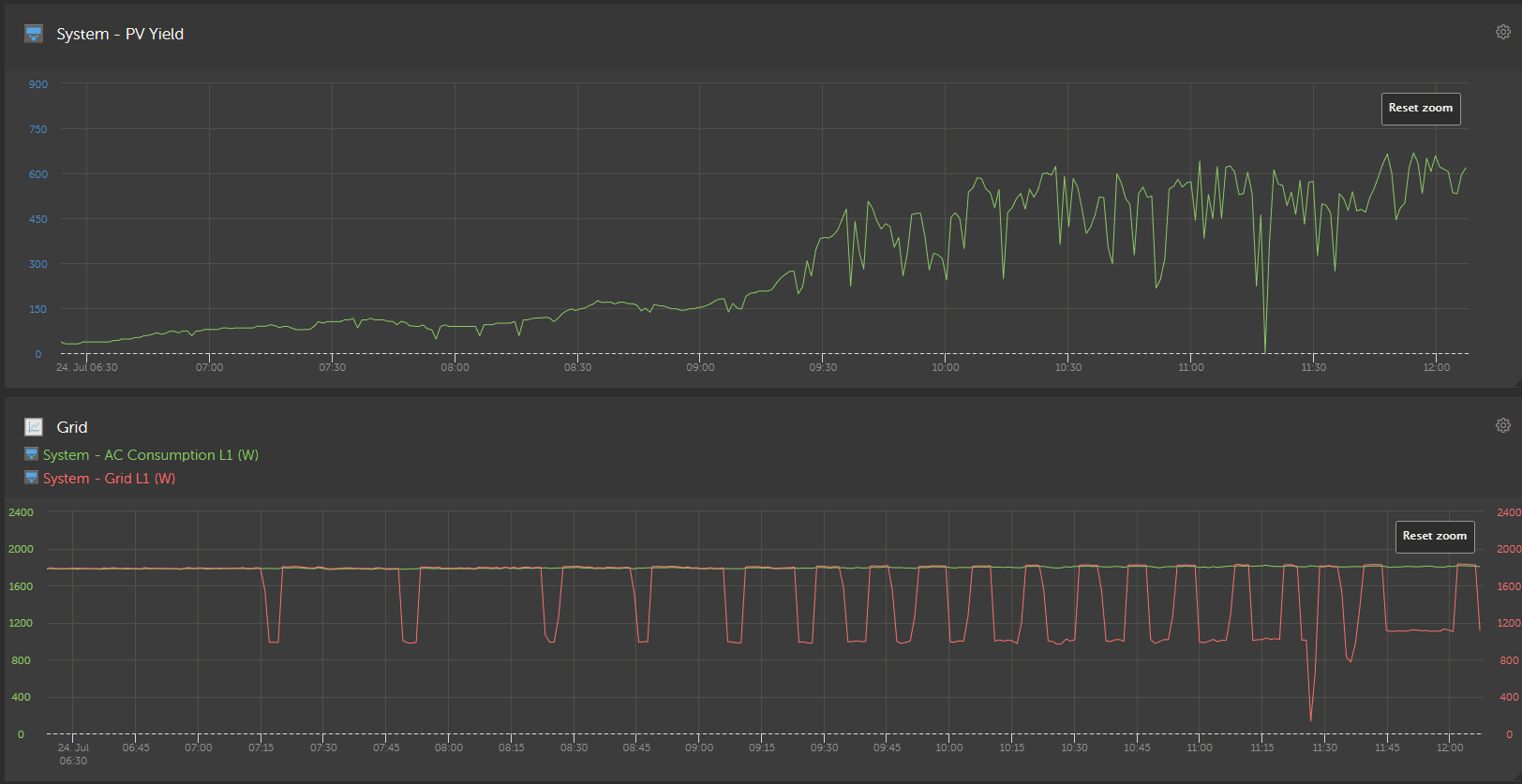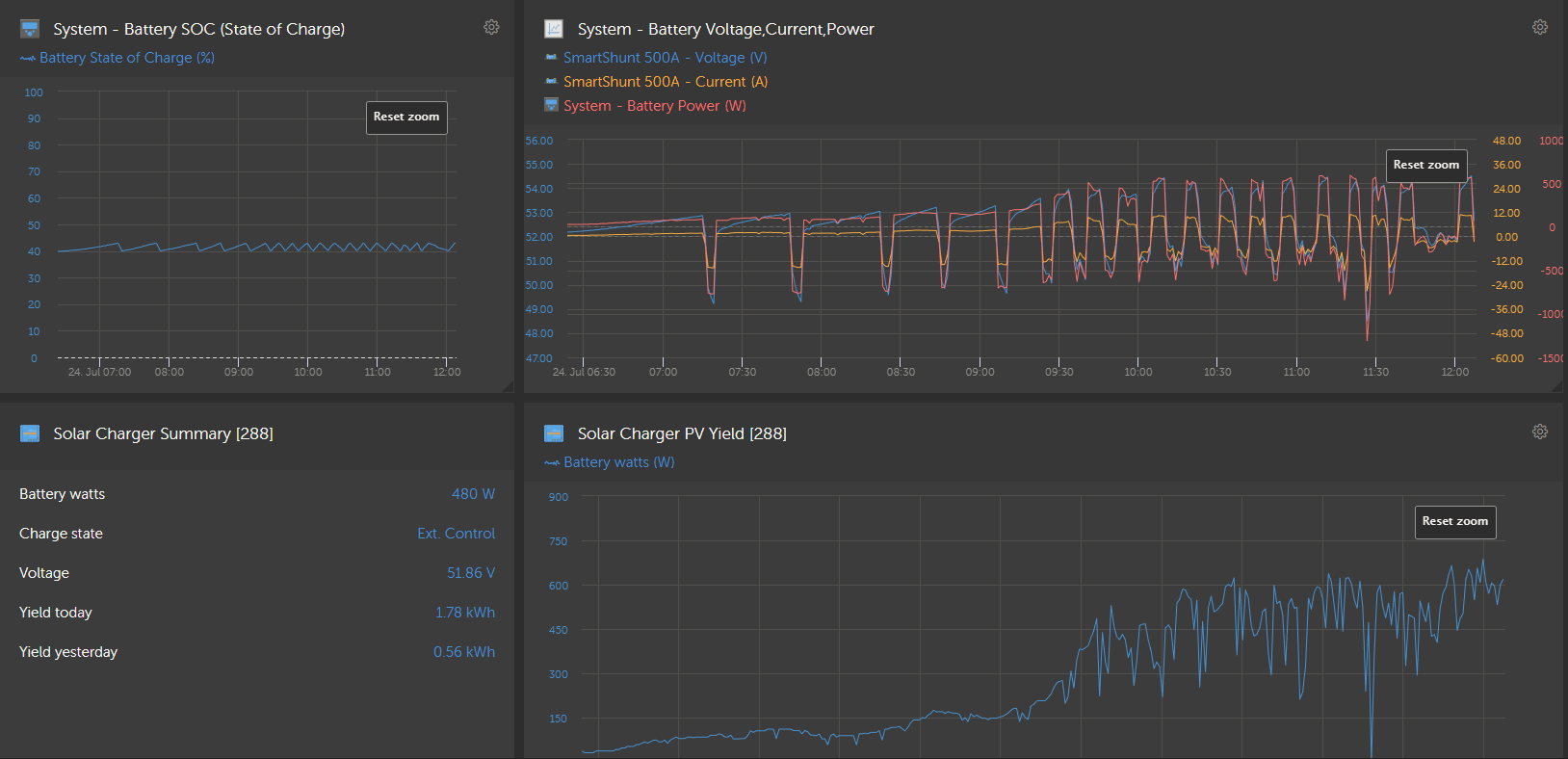So i just installed my system yesterday and this is my first solar production day.
I have the system set to "Optimized without BatteryLife"
Soc limit is set to 40%
Inverter power limit set to 1000W (Don't want to discharge the battery super quickly because its a smaller one)
So i'm having a problem when the solar recharges the battery to around 43% then the inverter discharges it back to 40% and the cycle repeats.
I would like to somehow prevent this and just use the 600W thats coming from solar directly to power the inverter and just keep the battery charged at 40% no more no less.
Do i have something set up wrong?


